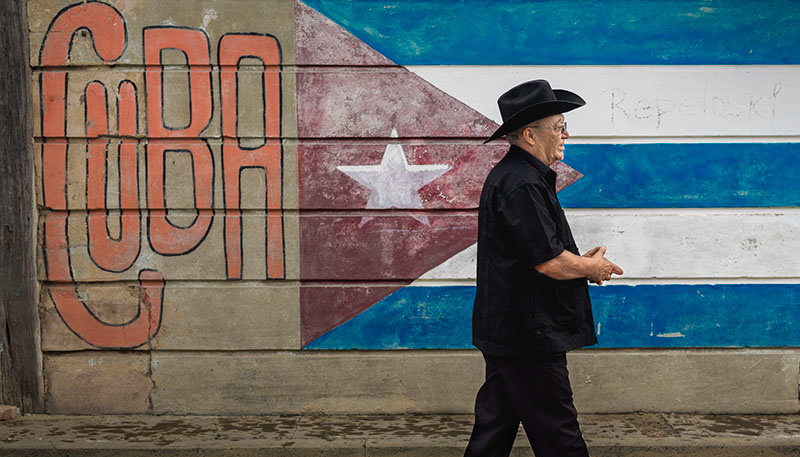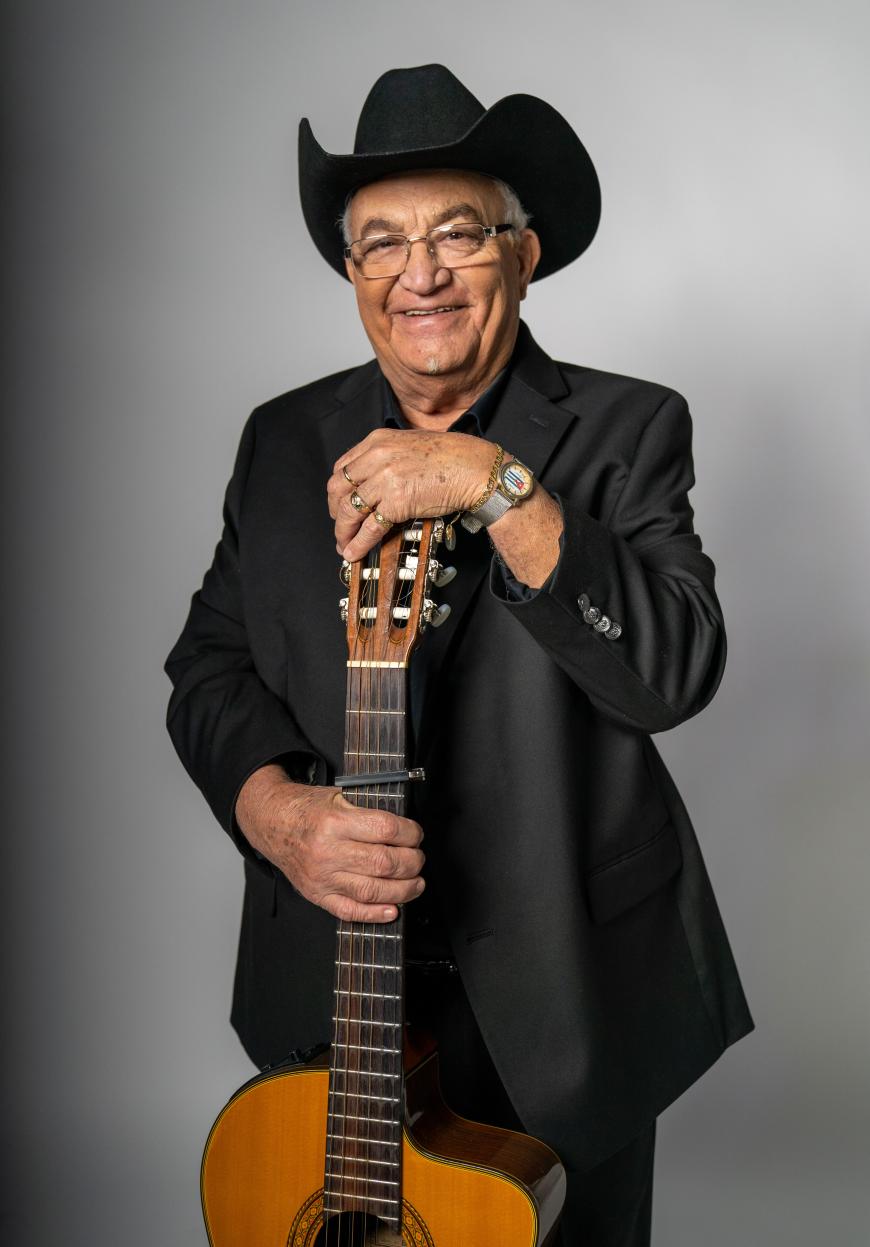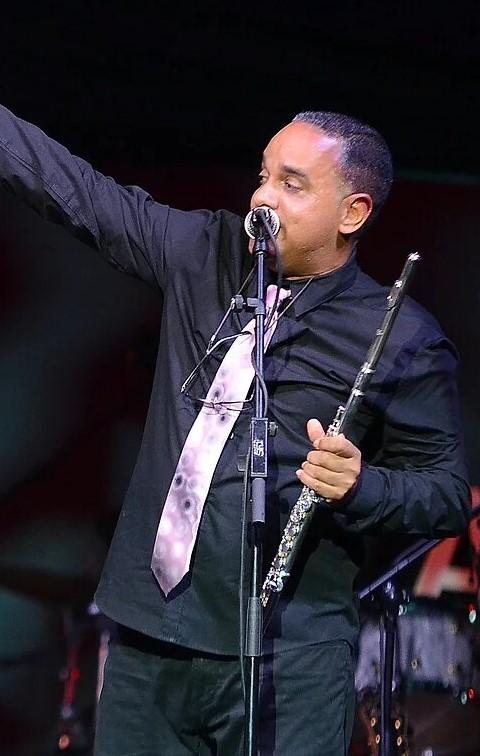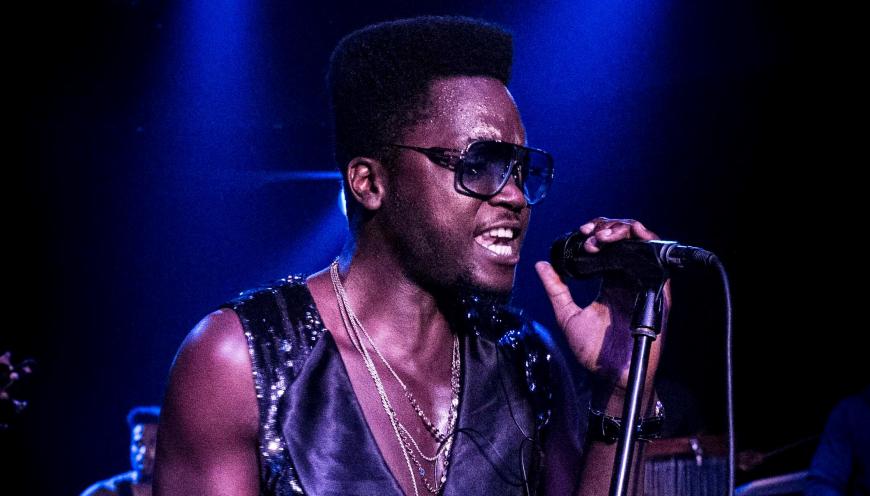
In the waning weeks of the Trump administration, the State Department designated Cuba a state sponsor of terrorism, adding the island nation to an exclusive group with North Korea, Syria, and Iran. For American presenters eager to showcase Cuban performers, the outlaw status has added another layer of time and expense to an already byzantine process, while Cuban musicians have faced higher hurdles obtaining visas to perform in the U.S.
Despite the daunting challenges, three generations of Cuban musicians, each embodying a distinct current of their country’s mighty musical culture, are performing around California in the coming weeks. More than iconic artists, Eliades Ochoa, Orlando “Maraca” Valle, and Cimafunk represent the evolution of Cuban music over a century of tumultuous history.

In his first California appearances since Buena Vista Social Club’s 2015 “Adiós Tour,” singer, guitarist, and songwriter Ochoa performs Aug. 16 at Santa Cruz’s Kuumbwa Jazz Center and Aug. 17 at Berkeley’s Freight & Salvage (and on Aug. 19 in Los Angeles at The Music Center’s Jerry Moss Plaza, part of a free outdoor double bill with La Santa Cecilia lead vocalist La Marisoul). He’s touring with a six-piece band in conjunction with his new album Guajiro, a project steeped in the traditional son cubano sound he helped reintroduce in the mid-1990s.
It’s a foundational pulse that paved the way for salsa, timba, and other styles, and in Ochoa’s hands it effortlessly encompasses contributions by a diverse roster of guest artists, including blues great Charlie Musselwhite, salsa star Rubén Blades, and singer-songwriter Joan As Police Woman (Joan Wasser). Wearing his trademark black guajiro cowboy hat, a nod to his rural childhood, and an embroidered black guayabera shirt, the 77-year-old Ochoa sounded relaxed and upbeat on a recent video call from Madrid, where he’s lived in recent years (his daughter and manager Evora Vicents provided translation from Spanish).
While the master sonero was the kid of the Grammy-winning, Ry Cooder-produced hit 1996 album Buena Vista Social Club (and the subsequent Wim Wenders documentary and touring ensembles of the same name), he was the project’s grounding traditionalist. His departed compatriots, pianist Rubén González and vocalists Compay Segundo and Ibrahim Ferrer, had been innovators in their time, blending Cuban idioms with elements of jazz and classical music, and were all at least two decades older.
Ochoa accompanied his Buena Vista partners artfully, but in his own music, he never relinquished the proud roots banner. “Son is the flag in Cuba,” he said. “Son cubano, it’s the center of our traditional music. The problem is in Cuba the media doesn’t play this type of music. Who is guilty here? We don’t know. But this music represents our culture and tradition. When we’re traveling, people expect to listen to son cubano. It’s very strong and recognized around the world.”
Born and raised in a small mountain village outside Santiago de Cuba where there was no electricity, Ochoa began playing guitar and learning the popular tunes of the day from his father’s transistor radio. Music was part of the fabric of life, a constant accompaniment to nearly every activity.
Playing a homemade hybrid of a standard six-string guitar and the smaller Cuban tres, Ochoa combines the elemental power of his campesino roots with the sophisticated touch of a virtuoso. Much of Ochoa’s repertoire consists of tunes he first heard played by his parents, who were both accomplished on the tres.
Son evolved at the turn of the 19th century in his hometown of Santiago, in eastern Cuba. As the leader of Cuarteto Patria, one of Cuba’s leading folkloric bands, Ochoa toured around the world spreading the gospel of son for decades before Buena Vista Social Club. The phenomenal success of the Buena Vista aggregation came as no surprise to the burly guitarist.
“Son is the strongest plate in my restaurant,” he said. “It has a special line, a special lilt to it that the others don’t. These songs are like a tree heavy with fruit. Such a tree casts a big shadow that many people find shelter under. When I leave from beneath the tree, I want to see many, many people resting in its shade.”

If Ochoa is son’s iconic troubadour, flute maestro Orlando “Maraca” Valle is the world’s foremost master of an instrument that plays a central role in several modern Cuban idioms. As an award-winning recording artist and as a bandleader and arranger who’s collaborated with Cape Verdean diva Cesária Évora, Ivory Coast’s Monique Séka, and fellow Cuban greats like Buena Vista timbalero Amadito Valdés, Cubanismo, and Juan de Marcos’s Afro-Cuban All Stars, Maraca has been one of the era’s defining figures in Cuban jazz and dance music, though he’s fluent in older styles, too.
He returns to the Bay Area as a special guest with the long-running Orquesta La Moderna Tradición, which performs Aug. 11–12 at Freight & Salvage, Aug. 13 at San Jose Jazz’s Summer Fest, and Aug. 14 at Kuumbwa Jazz Center. Founded in 1996 by Cuban dancer and percussionist Roberto Burrell and violinist Tregar Otton, La Moderna Tradición originally focused on danzón, an elegant Cuban style from the late 19th century. But with the swing dance revival of the late 1990s colliding with the Buena Vista phenomenon, the group expanded its repertoire.
For the shows with Maraca, the group has expanded to 14 pieces and includes many of the Bay Area’s top Latin musical artists, including violinist Anthony Blea, pianist Marco Diaz, flutist John Calloway, and percussionist Michael Spiro (who co-leads the group with Otton). Burrell, “a wonderful dancer and master percussionist,” Otton said, will also be rejoining the ensemble. It’s the group’s first collaboration with Maraca, a connection made through attorney Bill Martinez (who’s played an essential role in obtaining visas for Cuban musicians like the Havana-based Maraca).
But the ensemble has performed with Antonio Arcaño and Orquesta Aragón’s Richard Egües, the acknowledged kings of 20th-century Cuban flute, “and Maraca is the modern iteration,” Otton said. “He’s an amazing virtuoso flutist, Carnegie Hall-level, who plays everywhere in the world, with the best musicians. He’s a master of jazz and Latin jazz, but he also loves traditional Cuban music that involves flute, and there aren’t many charanga groups like La Moderna Tradición. It’s a really good fit.”

Rounding out the sensational triumvirate is Cuban rocker Cimafunk (aka Erik Alejandro Iglesias Rodríguez), the vocalist and leader of a powerhouse group that draws on Afrobeat, R&B, funk, and various Cuban dance styles. He performs at San Jose Jazz’s Summer Fest Aug. 12 on the mainstage. Now based in New Orleans, where he’s found endless inspiration from the local scene, Cimafunk is also deeply versed in the music of his fellow Cuban masters visiting the Bay Area.
“I grew up with the music of Eliades Ochoa, both with Buena Vista Social Club and by himself,” he said. “He had number-one hits in Cuba, and you’d listen to that song every day everywhere. I got a lot of his influence, the way they created music and dealing with the groove. It seems simple, but to do it with meaning, that’s the difficult part.”
Cima’s path has crossed with Ochoa’s a few times, but he’s yet to meet Maraca in person. He certainly knows his music, though. “He’s one of the main guys in Cuban culture,” Cima said. “The most modern reference in Cuban music. He also put out crazy hits when I was a kid. I was always super curious how a guy playing the flute could get thousands of people dancing and getting crazy.”
Talking with Cima about his influences is a humbling experience. Coming of age in the mid-aughts, with little access to the internet or mass media outside of state control, he soaked up American music. He got his start busking in Havana, singing Stevie Wonder and Michael Jackson covers, though his natural range didn’t accommodate their upper registers.
He eventually found his way to the music of departed masters like Cuban legend Beny Moré and Marvin Gaye “and James Brown and George Clinton, who has that tribal essence with P-Funk, what I’m trying to do with my group,” Cima said. “I love Sonny Boy Williamson, and Sly Stone is one of my favorite singers for chorus and lyrics. The Ohio Players are huge in Cuba, and Lionel Richie, I was singing his music a lot, too.”
If there’s anything that six decades of history make clear, it’s that a recalcitrant communist government and feckless U.S. foreign policy can’t contain musicians determined to work together. And for the next few weeks, California audiences can benefit from their dogged determination.




